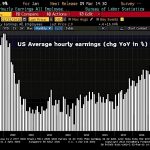Interest rates are on the rise and Real Estate Investment Trusts (REITs) have been struggling.

The iShares U.S. Real Estate ETF (IYR) has fallen nine straight days, the longest streak since its inception in 2000.

If you listen to the pundits, they will tell you that rising rates are the culprit. You’ll often hear that higher interest rates are unquestionably bad for REITs.
That may be the case in recent weeks, but if we look at the longer-term evidence, just how tied to interest rates are REIT returns?
As it turns out, not as much as you might think.
We have data on the FTSE/NAREIT U.S. Equity REIT Index going back to January 1972. Since then, the monthly correlation of REIT returns to changes in the U.S. 10-year yield is close to zero: -0.08. In plain English this means that it is nearly impossible to predict the direction of REIT returns based on the direction of interest rates.

There have been times when REITs have done well during periods of rising rates and other times when they have done poorly. Similarly, there have been times when REITs have done well during periods of falling rates and other times when they have done poorly.
In recent years, falling interest rates have actually been the greater concern. In 2007, 10-year yields fell by 68 basis points while REITs declined 15.7%. The next year (2008) was the worst year in history for the Equity REIT Index (-37.7%), a year in which the 10-year yield fell by 181 basis points. In the following year, 2009, interest rates rose 163 basis points while REITs had one of their best years ever (+28.0%).

How is that possible? Well, a more important driver of REIT performance than interest rates is economic growth. Stronger economic growth tends to lead to higher occupancy rates and rents which lead to higher earnings for REITs. Oftentimes, stronger economic growth is accompanied by higher interest rates, as it was in 2009. While this rise in rates may have some negative effects on earnings (ex: higher financing costs) and demand (ex: investors require higher dividend yield), the increase in growth seems to more than counteract this. And the opposite situation, lower rates with lower growth, is far worse.


















Leave A Comment